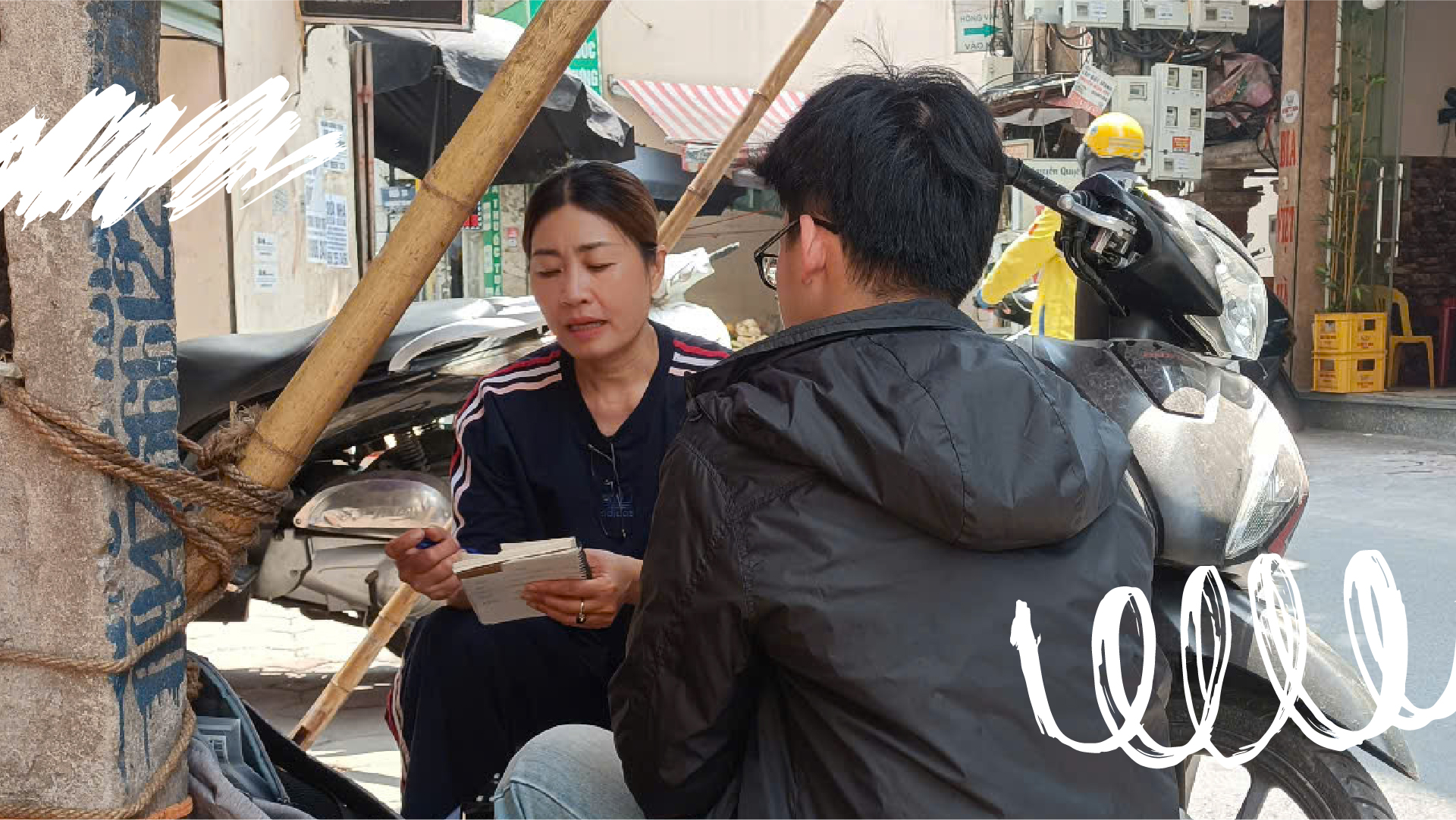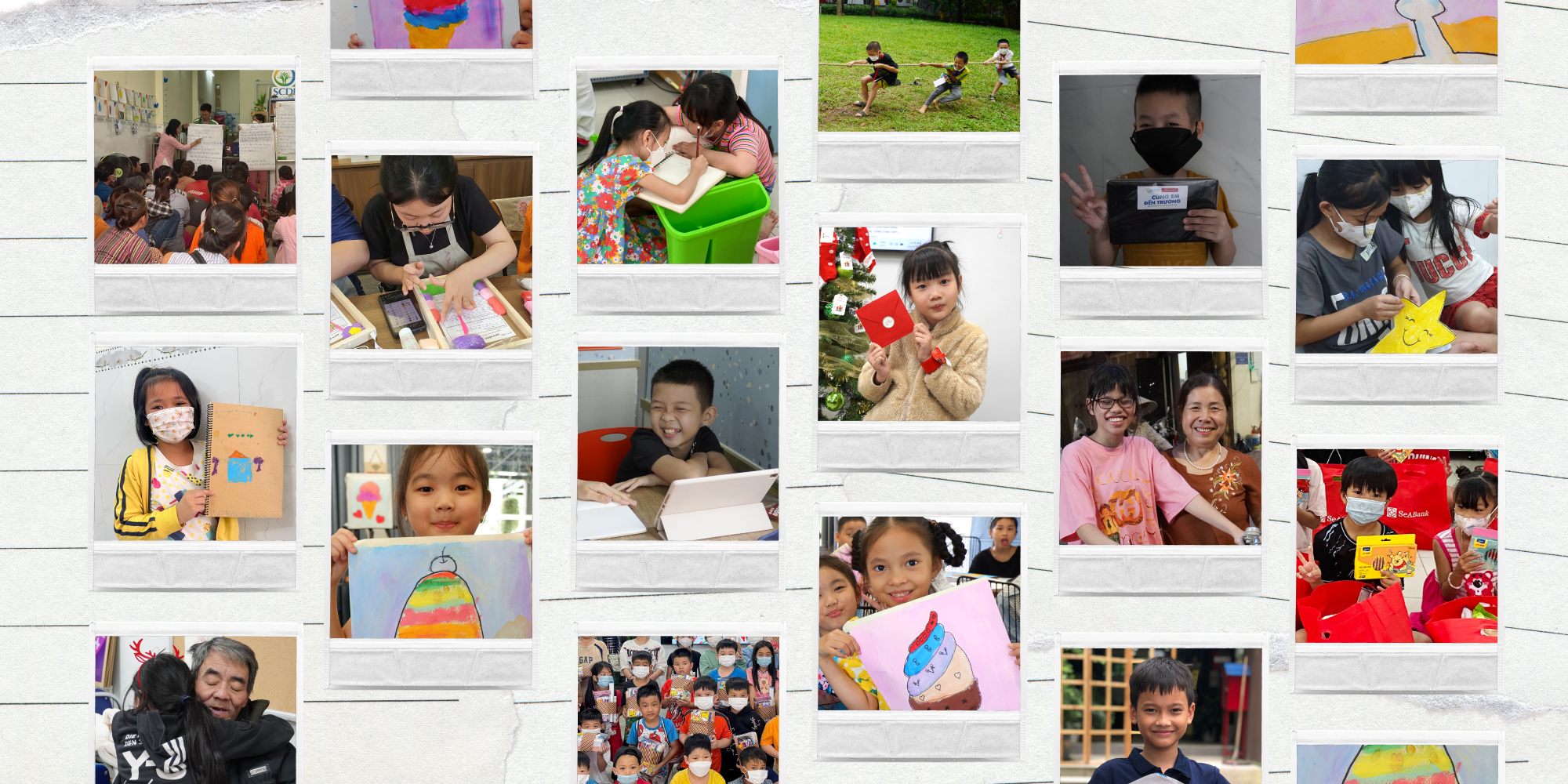The Companion
The Saving the Future project, implemented by the Center for Supporting Community Development Initiatives (SCDI), has marked a pioneering step in controlling HIV transmission among young people who use drugs in Vietnam through innovative strategies.
The Building Up project builds upon the foundation of the Saving the Future project implemented in the previous phase, not only focusing on HIV prevention and harm reduction related to substance use but also expanding the scope of mental health interventions and adverse childhood experiences - core factors that directly affect the recovery process and quality of life of people who use substances.
On that journey, Saving the Future – Building Up is fortunate to walk alongside experts and partners - those with extensive expertise, understanding, and empathy to help bring truly effective and comprehensive interventions to young people who use substances.
Every conversation, every intervention is a key that opens the door to recovery. And on the other side of that door lies not only peace of mind, but also the connection that leads to lasting change.
The Building Up project builds upon the foundation of the Saving the Future project implemented in the previous phase, not only focusing on HIV prevention and harm reduction related to substance use but also expanding the scope of mental health interventions and adverse childhood experiences - core factors that directly affect the recovery process and quality of life of people who use substances.
On that journey, Saving the Future – Building Up is fortunate to walk alongside experts and partners - those with extensive expertise, understanding, and empathy to help bring truly effective and comprehensive interventions to young people who use substances.
Every conversation, every intervention is a key that opens the door to recovery. And on the other side of that door lies not only peace of mind, but also the connection that leads to lasting change.
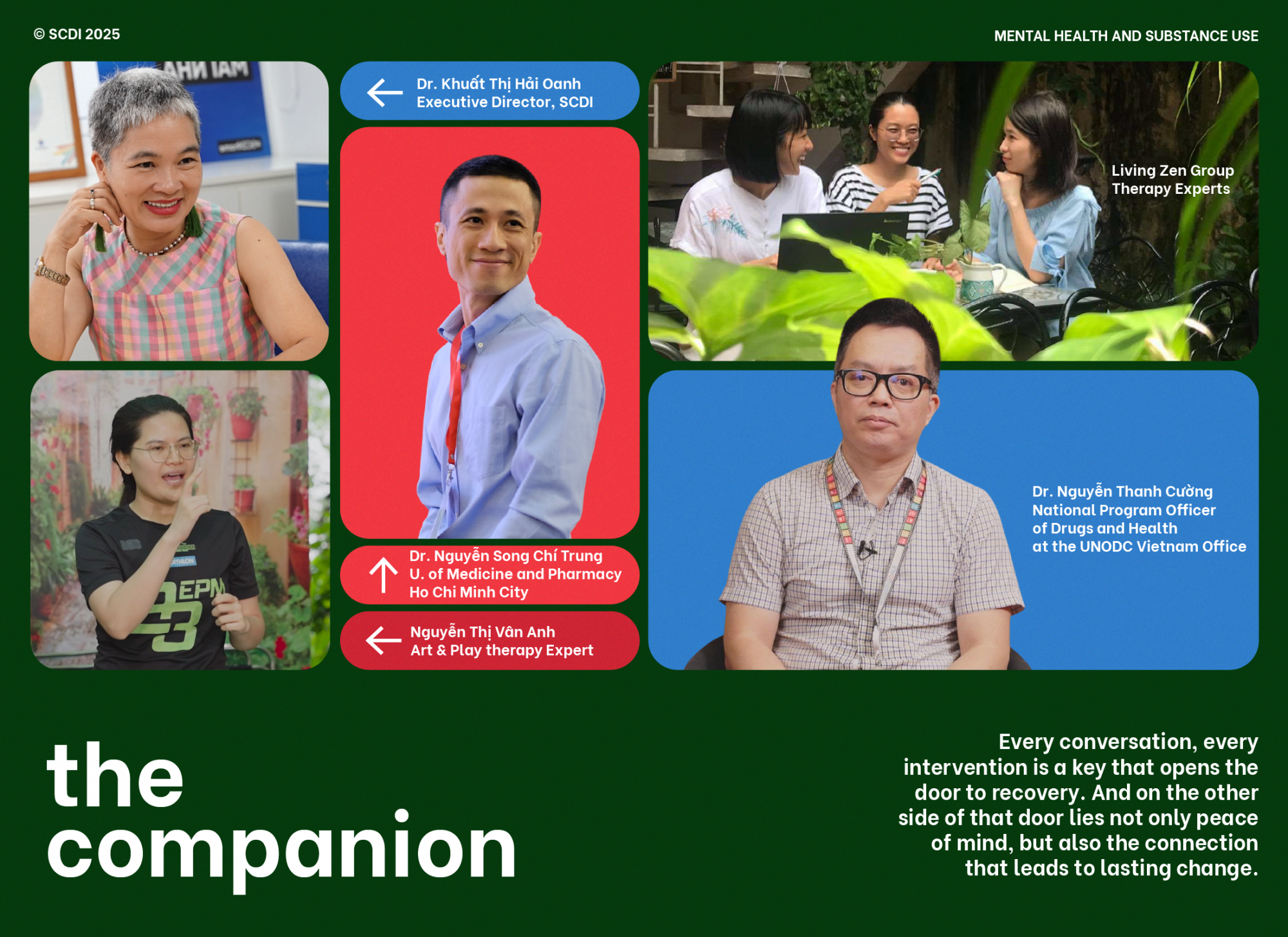
Invisible wounds
“There are many causes of drug use among adolescents, but there are always real reasons behind it. The common point among the young people I have met is that they all live in complex circumstances, and their substance use is shaped by not a single factor, but by many, such as family trauma, difficult living conditions, or pressures in daily life.” MSc. Dr. Nguyen Song Chi Trung, lecturer in the Department of Psychiatry at the University of Medicine and Pharmacy, Ho Chi Minh City, and a partner in screening and treating mental health problems, could not hide his concern when talking about the young people in the project.
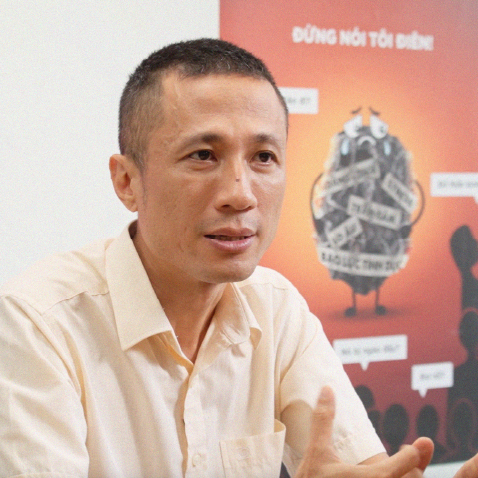

Expert Nguyen Thi Van Anh, who leads art and play-based interventions in the project, shared: “Most of the young people I have had the chance to meet through the project did not have an easy childhood. Some never even went to school. Some grew up deprived of affection, carrying deep wounds from a very young age. These wounds have become scars on their souls, lingering silently over the years and shaping how they see themselves and the world around them.”
“Many young people live in their own worlds, with social relationships that are growing narrower. For some, using drugs or addictive substances is a way to comfort themselves, to escape reality, and even an attempt to reconnect with their own inner selves.” Expert Thu Thuy from the Living Zen group, who is responsible for designing the Healing Circle activity as part of the intervention to address adverse childhood experiences, shared this with the project team.
“Many young people live in their own worlds, with social relationships that are growing narrower. For some, using drugs or addictive substances is a way to comfort themselves, to escape reality, and even an attempt to reconnect with their own inner selves.” Expert Thu Thuy from the Living Zen group, who is responsible for designing the Healing Circle activity as part of the intervention to address adverse childhood experiences, shared this with the project team.


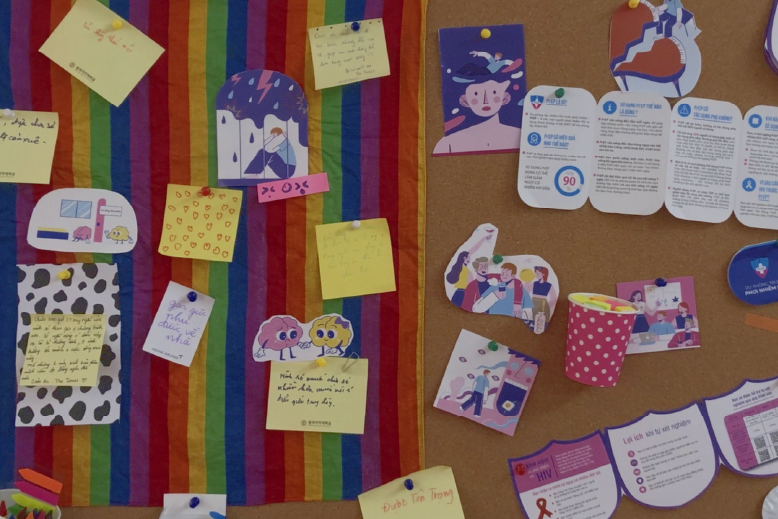
Through the sharing of experts and SCDI team's observation, the lives of young people in Saving the Future – Building Up emerge as a canvas marked with many dark strokes. Turning to substances is not merely an act of rebellion; for some, it seems the only way to momentarily forget their pain, to fill the emptiness inside, or to grasp at a sense of connection and belonging. Within this spiral, mental health is present as an inseparable piece, both a driving cause and a consequence of substance use. This interweaving deepens the wounds, making the road to recovery even more challenging without timely and comprehensive intervention.

According to in-depth studies, between 20% and 40% of people who use drugs experience mental health problems, with adolescents (aged 16–24) often showing higher rates. A 2018 study conducted by the Saving the Future project in collaboration with Hanoi Medical University surveyed 319 adolescents who use drugs and found that as many as 58% showed signs of depression. Notably, 26.3% of these adolescents had suicidal thoughts, of which 12.2% had made plans, and 6.3% had actually attempted suicide.
Placed within a multidimensional context, mental health emerges as an underlying factor contributing to other high-risk behaviors, such as unsafe sex, poor treatment adherence, and increased HIV transmission among people who use drugs.
Speaking about the importance of mental health intervention, Dr. Chi Trung affirmed, “Mental health issues cannot be separated from the overall health care system. In addition to HIV treatment or harm reduction for substance use, mental health care contributes to reducing the need for use, helping people adhere to treatment better, and improving their quality of life”.
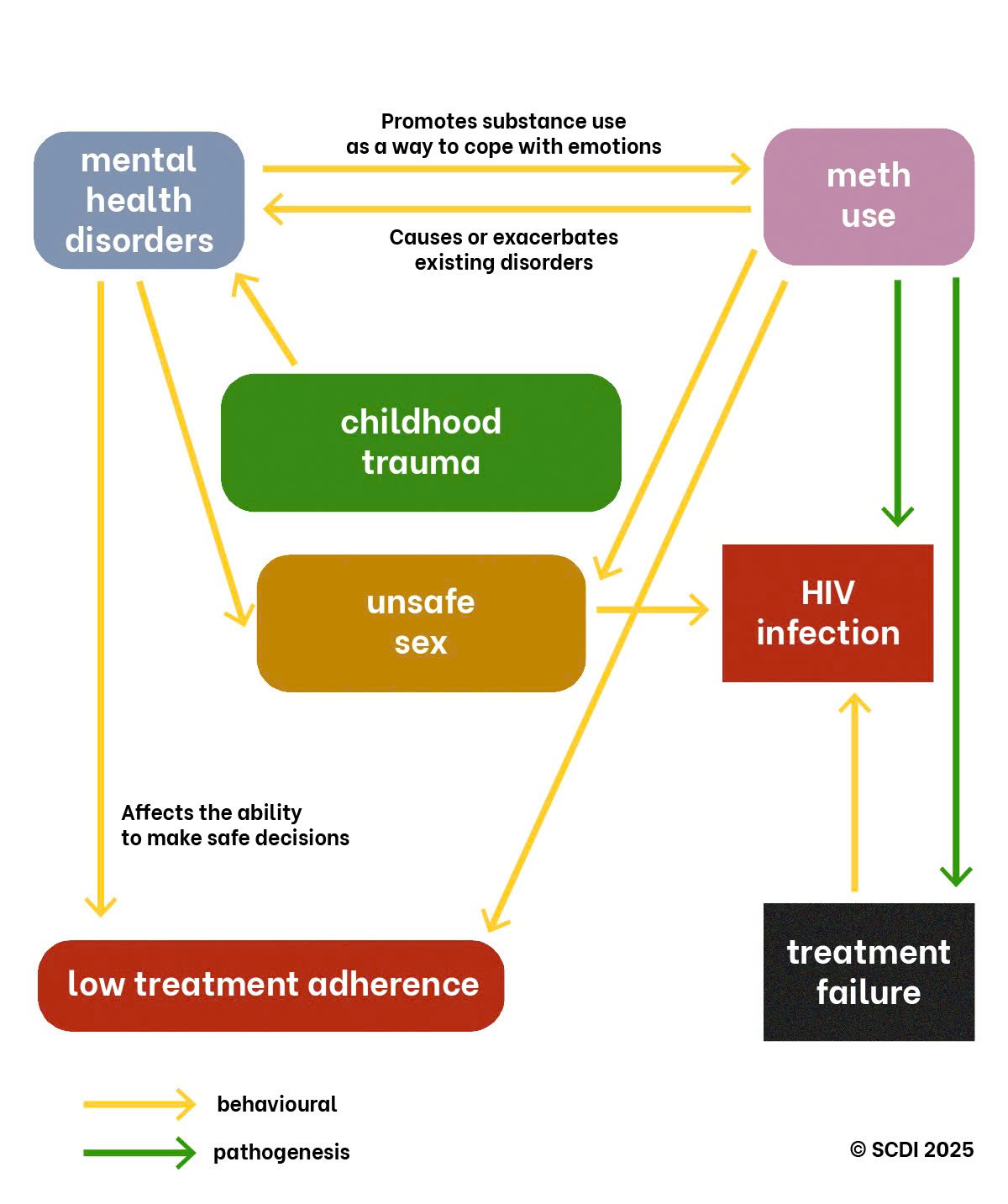
Placed within a multidimensional context, mental health emerges as an underlying factor contributing to other high-risk behaviors, such as unsafe sex, poor treatment adherence, and increased HIV transmission among people who use drugs.
Speaking about the importance of mental health intervention, Dr. Chi Trung affirmed, “Mental health issues cannot be separated from the overall health care system. In addition to HIV treatment or harm reduction for substance use, mental health care contributes to reducing the need for use, helping people adhere to treatment better, and improving their quality of life”.

When mental wounds are soothed
In the project, mental health interventions are one of the core strategies, integrated with HIV prevention and substance use harm reduction interventions. It is the companionship of the outreach team, who have extensive experience working with the community, that has become a bridge to help bring once unfamiliar issues like “mental health” closer.
With the Quick Screening Tool*, outreach workers receive technical support to screen for and identify early signs of psychological and mental health issues in the community. Clients requiring more specialized mental health care are referred to medical facilities, where they can be examined and treated by qualified doctors.
With the Quick Screening Tool*, outreach workers receive technical support to screen for and identify early signs of psychological and mental health issues in the community. Clients requiring more specialized mental health care are referred to medical facilities, where they can be examined and treated by qualified doctors.
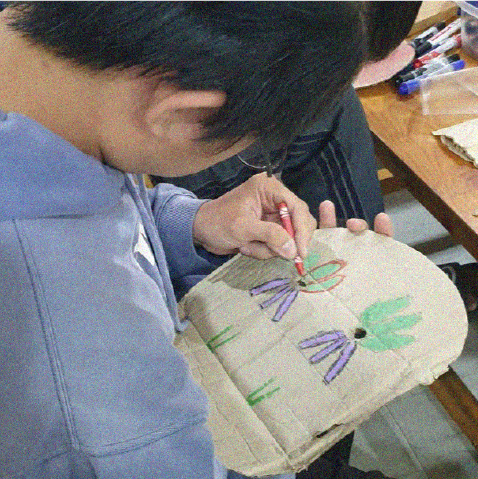
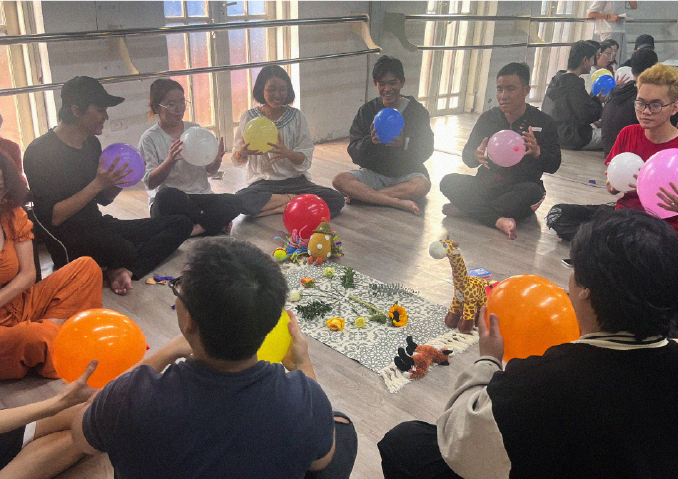
The project's milestones, especially the community-based mental health intervention model, have received recognition from experts and partners.
Dr. Chi Trung shared, “People who use substances, live with HIV, and face mental health challenges experience triple stigma. These prejudices often lead them to internalize stigma, making them more hesitant to seek or accept support. But when someone truly close - someone from within their own community - reaches out, they become more confident, open up about their situation, adhere to treatment better.”
The Living Zen group shared: “Although I had read and heard a lot of stories before, when listening directly to them talk about their lives and feelings, I was still moved and wondered: What can I do to support and accompany them? When facilitating the healing circle, I realized that the most suitable people to lead this activity are the outreach workers. They know this journey, they understand the pain, and they know how to nurture trust. At the same time, they embody the strength to spread hope throughout the community.”
Dr. Chi Trung shared, “People who use substances, live with HIV, and face mental health challenges experience triple stigma. These prejudices often lead them to internalize stigma, making them more hesitant to seek or accept support. But when someone truly close - someone from within their own community - reaches out, they become more confident, open up about their situation, adhere to treatment better.”
The Living Zen group shared: “Although I had read and heard a lot of stories before, when listening directly to them talk about their lives and feelings, I was still moved and wondered: What can I do to support and accompany them? When facilitating the healing circle, I realized that the most suitable people to lead this activity are the outreach workers. They know this journey, they understand the pain, and they know how to nurture trust. At the same time, they embody the strength to spread hope throughout the community.”
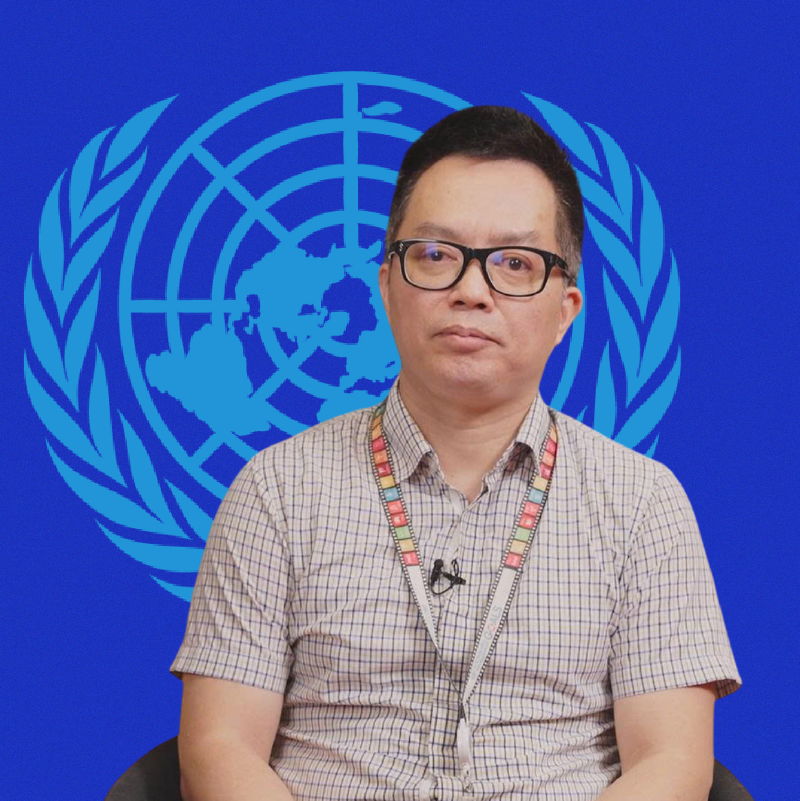
“Intervention programs need to be designed comprehensively, because there is no single solution that can effectively respond to all young people who use stimulants.”
Dr. Nguyen Thanh Cuong, National Program Officer of Drugs and Health at the UNODC Vietnam Office, also highly appreciated the project’s intervention model:
“Vietnam is currently one of the hot spots for drug-related challenges, especially synthetic stimulants. Therefore, intervention programs need to be designed comprehensively, because there is no single solution that can effectively respond to all young people who use stimulants. Currently, at the community level, many community organizations are implementing different intervention models for people who use stimulants, especially adolescents. However, one model that I find both comprehensive and well-suited to Vietnam’s context, and aligned with United Nations recommendations, is the Saving the Future – Building Up model implemented by SCDI for adolescents who use stimulants.”
“Vietnam is currently one of the hot spots for drug-related challenges, especially synthetic stimulants. Therefore, intervention programs need to be designed comprehensively, because there is no single solution that can effectively respond to all young people who use stimulants. Currently, at the community level, many community organizations are implementing different intervention models for people who use stimulants, especially adolescents. However, one model that I find both comprehensive and well-suited to Vietnam’s context, and aligned with United Nations recommendations, is the Saving the Future – Building Up model implemented by SCDI for adolescents who use stimulants.”
Interventions start with understanding
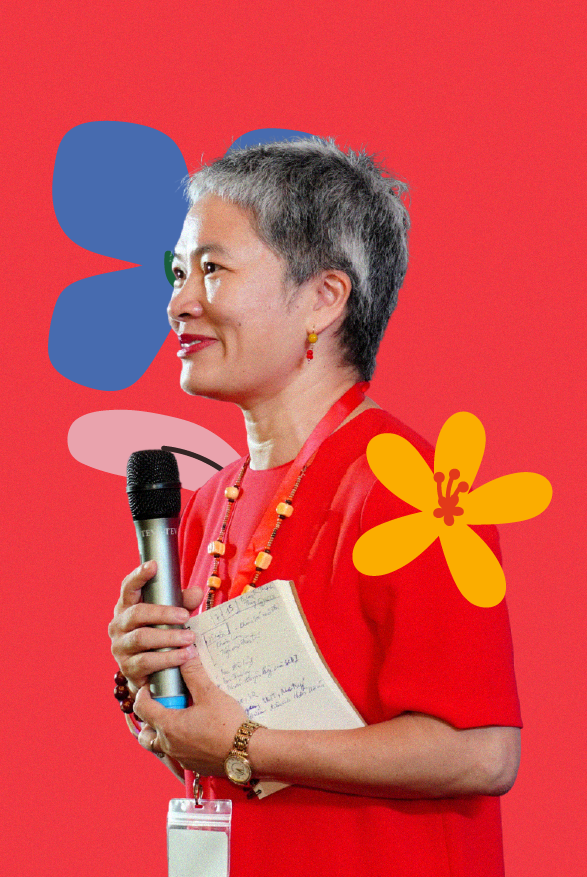
"A major barrier to interventions being truly effective and reaching thóe in need is stigma, both from the community and, at time, self-stigma among people who use substances themselves. Stigma acts as an invisible wall, making them hesitant to seek help and causing them to withdraw into feeling of shame.”
Dr. Khuat Thi Hai Oanh, Executive Director of SCDI, shared: “Adolescents struggling with both drug use and mental health disorders often face tremendous pressure from double stigma, which makes them increasingly withdrawn and stuck. The more isolated they become, the later their conditions are diagnosed, and the longer treatment is delayed, making the damage caused by drug use and mental disorders to the brain much more difficult to recover and much more time-consuming.”
It is the outstretched arms of family, relatives, and community that become the “seeds” in the recovery process. Those connections build a comprehensive and effective support environment, where young people are not only seen as needing help, but also empowered to draw on their inner strength to heal themselves.

“When I listen to the young people share during each counseling session, I see not resignation but tremendous effort. On the contrary, they have taught me so much about resilience and hope. I wish for the community to be more open and compassionate, so that these young people can recover, contribute, and help make life better.”
“A genuine relationship and a safe space allow young people to trust and feel comfortable sharing their struggles. Even when they have begun treatment, that is only the first step on a long journey of recovery. Those living with substance dependence or mental health challenges always need the companionship and support of family, friends, and the community.”
It is the outstretched arms of family, relatives, and community that become the “seeds” in the recovery process. Those connections build a comprehensive and effective support environment, where young people are not only seen as needing help, but also empowered to draw on their inner strength to heal themselves.

“When I listen to the young people share during each counseling session, I see not resignation but tremendous effort. On the contrary, they have taught me so much about resilience and hope. I wish for the community to be more open and compassionate, so that these young people can recover, contribute, and help make life better.”
“A genuine relationship and a safe space allow young people to trust and feel comfortable sharing their struggles. Even when they have begun treatment, that is only the first step on a long journey of recovery. Those living with substance dependence or mental health challenges always need the companionship and support of family, friends, and the community.”
Extending helping hands
In addition to community-based interventions, a key feature of Building Up is its strong focus on creating close partnerships with psychiatric hospitals and health facilities, with the aim of supporting people who use substances to receive comprehensive, timely, and specialized care.
In 2024, awareness-raising training sessions for psychiatrists in the project provinces were organized so that doctors are not only equipped with in-depth knowledge of vulnerable groups but also listen and understand the stories from the community.
“Before attending the training course, I used to look at patients only through their clinical symptoms, and at times I found it difficult to approach people who use substances or have mental health challenges. But through the sharing sessions, I realized I hadn’t truly understood their circumstances, their psychology, or the daily pressures they endure. This has helped me change my perspective, not only to focus on treatment, but also on listening and understanding.”
In 2024, awareness-raising training sessions for psychiatrists in the project provinces were organized so that doctors are not only equipped with in-depth knowledge of vulnerable groups but also listen and understand the stories from the community.
“Before attending the training course, I used to look at patients only through their clinical symptoms, and at times I found it difficult to approach people who use substances or have mental health challenges. But through the sharing sessions, I realized I hadn’t truly understood their circumstances, their psychology, or the daily pressures they endure. This has helped me change my perspective, not only to focus on treatment, but also on listening and understanding.”
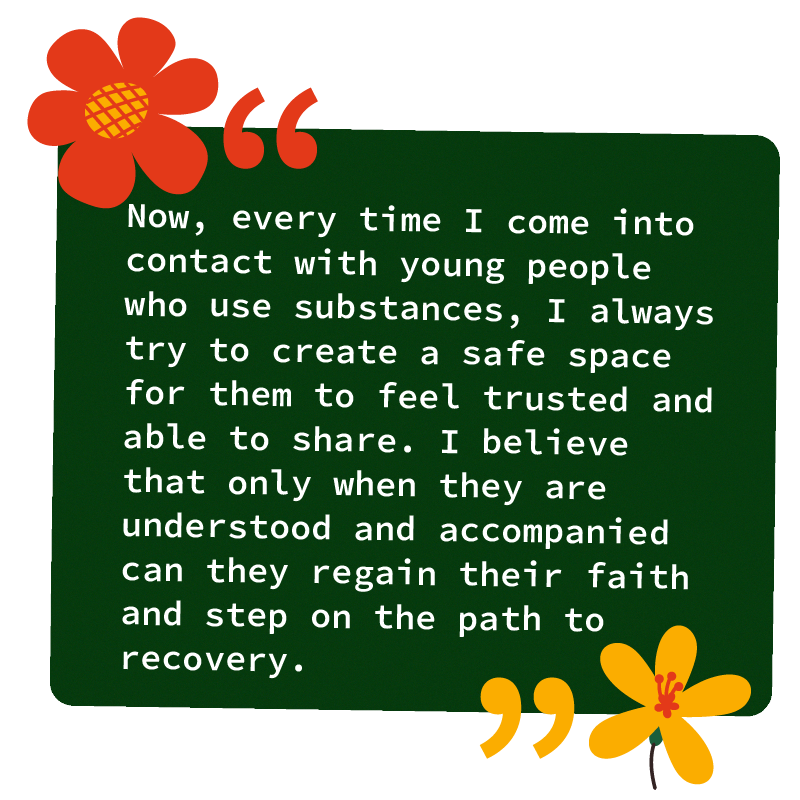
More companionship means more opportunities for recovery. When the community connects, supports, and spreads understanding, each step of young people on the recovery journey becomes steadier.
The companionship from partners, doctors, and experts provides a powerful source of motivation, giving the project team greater confidence in the journey of health care and improving the quality of life of young people who use substances.
We believe that, with that companionship, this meaningful journey will go even further and reach wider communities, helping transform the lives of many young people, so that every future is protected and nurtured with hope.
The companionship from partners, doctors, and experts provides a powerful source of motivation, giving the project team greater confidence in the journey of health care and improving the quality of life of young people who use substances.
We believe that, with that companionship, this meaningful journey will go even further and reach wider communities, helping transform the lives of many young people, so that every future is protected and nurtured with hope.
*The Quick Screening Tool is a rapid mental health survey tool, developed by SCDI to serve initial screening in the community. This tool has been validated by mental health experts in Vietnam and France, ensuring criteria of sensitivity, specificity, and accuracy in detecting common mental health conditions.
Content: Anh Cao
Editing: Hùng Nguyễn
Design and illustration: Lê Quỳnh Trang
Photos: Saving the Future - Building up project team
Copyright © 2025, Center for Supporting Community Development Initiatives (SCDI)

